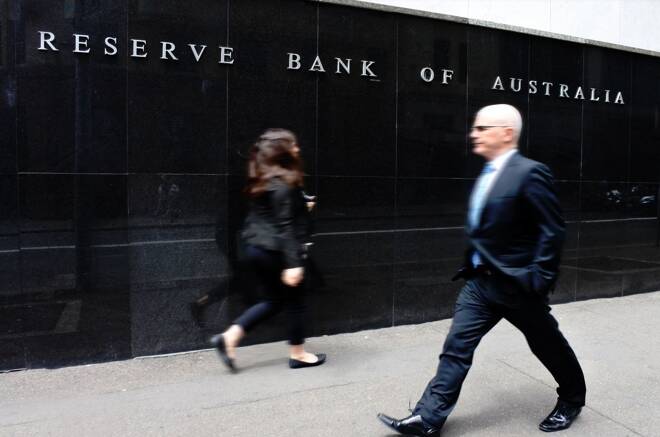Advertisement
Advertisement
AUD/USD and NZD/USD Fundamental Daily Forecast – RBA Holds Policy as it Deals with Unemployment, Low Inflation
By:
The RBA held the official cash rate at 0.1 percent. The move was widely expected by investors.
The Australian Dollar is trading slightly lower early Tuesday after traders showed little reaction to the Reserve Bank’s (RBA) interest rate decision. However, traders are monitoring the money markets to see if there is any major change in prices that would suggest an earlier than expected rate hike by the central bank. Pricing in a rate hike would be bearish for the Aussie.
At 04:53 GMT, the AUD/USD is trading .7542, down 0.0010 or -0.13%.
RBA Holds Interest Rates at 0.1 Percent
The Reserve Bank held the official cash rate at 0.1 percent at its April 6 meeting, the fifth meeting where the rate has been cut to or held at the record low. The move was widely expected by investors.
The RBA moved to the current rate in November with a 15 basis point cut to help boost the nation’s economic recovery from the coronavirus pandemic and support job creation.
The cash rate is expected to be on hold potentially until 2025. RBA Governor Philip Lowe previously said the central bank would not increase interest rates until inflation was back in the target band of between 2 and 3 percent. This is only expected to happen when unemployment drops low enough to encourage wages growth, which may not occur for several years on the latest available forecasts. At the end of 2020, inflation was running at 0.9 percent.
RBA Faces Challenges
The RBA is looking to achieve an unemployment rate of 4 percent or less to trigger higher wages and lift inflation to between 2 and 3 percent.
Currently, unemployment is at 5.8 percent after a bigger-than-expected fall in February, while inflation is at 0.9 percent. It’s struggled to bring inflation to its target for around six years.
Reaching a sub-4 percent unemployment rate would mean returning to employment levels last seen before the Global Financial Crisis.
Lowe said that while the economic recovery has been stronger than expected, wage and price pressures will remain weak for the years to come.
“The economy is operating with considerable spare capacity and unemployment is still too high. It will take some time to reduce this spare capacity and for the labor market to be tight enough to generate wage increases that are consistent with achieving the inflation target,” Lowe said.
Most economists agree the RBA will be hard pressed to achieve both of these goals before 2023.
“The RBA is waiting for core inflation to stabilize within its range of 2-3 percent, which is some time off even under a strong upside growth scenario. The market has run ahead of the RBA and will rerate the timing of the first rate hike after the RBA’s next meeting,” QIC chief economist Matthew Peter told the Finder interest rate survey.
“Progress toward a tighter labor market continues to beat expectations, but it will be some time before wage growth increases materially,” added BIS Oxford Economics’ Sean Langcake.
For a look at all of today’s economic events, check out our economic calendar.
About the Author
James Hyerczykauthor
James Hyerczyk is a U.S. based seasoned technical analyst and educator with over 40 years of experience in market analysis and trading, specializing in chart patterns and price movement. He is the author of two books on technical analysis and has a background in both futures and stock markets.
Advertisement
